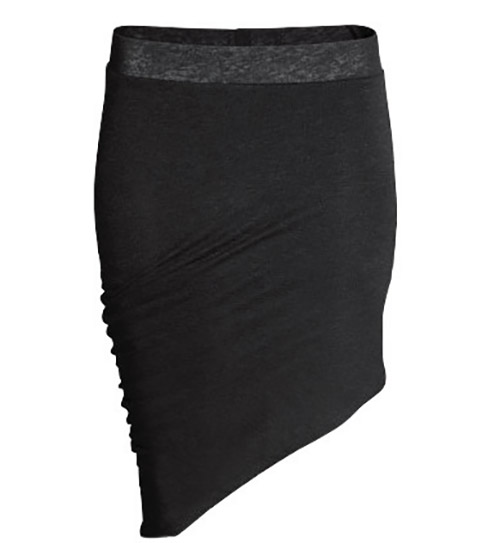




Anyone watching the fashion scene surely takes note of a very noticeable fact: Trends come and go, and eventually tend to come back. The 1920s dresses were unique in its day—with handkerchief hems and designs that were shorter in front and longer in the back—but “what’s old is new again,” and after reappearing for a time in the ‘70s and ‘80s, almost a century later from their initial appearance, these designs have returned again to add a touch of whimsy to the hemline.
“The asymmetrical integrity of the jagged hems creates visually interesting lines on the body, as well as a good amount of volume that tends to be quite flattering,” explained fashion stylist and blogger such.a.betty, Betty Gulko. While originally an extension of the fringe trend, Gulko elaborated further that “asymmetrical hems have proved here to stay because of their versatility and that they work in pretty much any way, wardrobe wise.”
As Gulko explains, there are varying types of asymmetrical hems:
A high-low hem is a hem where the front is shorter than the back.
A handkerchief hem has a jagged appearance, often created by sewing several pieces of fabric together. The multiple layers create a full effect at the hemline.
Another type of asymmetrical hem is where the hemline goes on a diagonal across the front of the wearer, with one side being longer than the other rather than straight across.
“The vibe is artsy, architectural and avant-garde,” said Gulko.
Handkerchief hems, also sometimes referred to as sharkbite hems (since it looks like a huge shark may have taken a bite out of the hem), can change the look of a regular outfit. “It adds interest to a classic silhouette,” commented Chani Wuensch, one of the three sisters who together are the force behind Wukogals.com, a popular modest clothing company with an international fan base. Handkerchief hems allow dresses to be worn in many ways by allowing wearers to customize their look,” Wuensch elaborated. She explained how women often seek a look that is easy to throw on to get through morning chaos, but versatile enough to wear out the door to work, meetings and anything else that needs to be done while still feeling comfortable. In a handkerchief hem dress, she may choose to leave a dress loose, belt it, wrap it, tie it to the side, accessorize, or even knot it at the bottom, all of which can enhance a look, dress it up or dress it down and still serve many purposes in one outfit.
Though all the types of asymmetrical hems have become part of mainstream fashion, Gulko and Wuensch both agree on the versatility of the handkerchief look. Wuensch and her sisters noticed that some women enjoy the look of a shirt rather than a dress, and they designed handkerchief shirts in the style of some of their popular dresses. “You can have two women wear the same shirt, and have it look completely different based on how they pair it, accessorize it and style it,” said Wuensch. Gulko outlined further benefits of a handkerchief hem shirt. “Surprisingly, it can be well suited to both pear- and apple-shaped body types. It seems counterintuitive, but can work for apple shapes, as the silhouette is forgiving over the midsection, whereas for pear shapes it’s forgiving over the hips and thighs.”
As with any trendy piece, Gulko offers a few guidelines for maximizing the handkerchief pizzazz: Do not forget that leggings and tights can be part of the style in an outfit. Also, try not to over accessorize, or add too many trends; focus on trend to dominate the look, and “use the others as a mere accent.”
“The best part about items with handkerchief hems is how they swoosh and move as you stride, which is especially true of the skirts and dresses—fun, flirty and festive,” said Gulko. Wuensch further described the WukoShana—a handkerchief hem dress inspired by Shana of Ana+Ava as a “dreamy and airy” feel.
Whatever hem design one chooses to wear, go with Gulko’s advice: “Forget the rules. If you like it, wear it.” Happy hemline hunting, ladies.
By Jenny Gans











